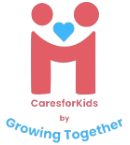Did You Know If You Have Medicaid, You Can Hire a Family Caregiver to Provide Your Care?
If you’ve ever felt anxious about strangers coming into your home to provide care, or if you’ve been struggling to get the support you need, there’s good news you might not know:
If you have Medicaid, you may be able to hire a family member to be your caregiver.
That’s right. In many states, Medicaid gives you the power to choose who provides your care, and that can include someone you know and trust, like your daughter, son, niece, cousin, or even close friend.
Let’s walk through how this works, who qualifies, and how to get started.

The Problem With Traditional Home Care
For many people who need help at home, traditional home care can be frustrating:
- You don’t get to choose who shows up.
- Aides are overbooked and understaffed.
- You may get someone different every week.
- The schedule might not fit your life.
- Worst of all, you don’t feel comfortable in your own home.
fami
Hiring a family caregiver through Medicaid flips that model on its head.
Instead of an agency assigning someone to you, you choose who helps you, and they get paid for it.
What Is Consumer-Directed Care?
The Medicaid program that allows this is often called Consumer-Directed Services (CDS), Self-Directed Care, or Participant-Directed Care.
Here’s how it works:
- You (the person receiving care) become the employer.
- You choose and hire your caregiver, often a family member or trusted friend.
- That person gets paid through Medicaid to care for you.
- A home care agency or state program helps manage the paperwork and payments.
In some cases, programs even offer training, support, and backup help so you’re never alone.
Who Can Be Hired as a Caregiver?
This varies by state, but here’s the general idea:
Allowed in many cases:
- Adult children
- Grandchildren
- Nieces or nephews
- Siblings
- Cousins
- Friends or neighbours
Usually not allowed (but check your state):
- Your spouse
- Your legal guardian
- Parents of minors receiving care
Some states, however, do allow spouses or parents to be paid caregivers, especially under certain waiver programs. It’s worth asking!
What Does a Family Caregiver Do?
Being a caregiver isn’t just about medical tasks. It can include:
- Helping with dressing, bathing, and hygiene
- Preparing meals and feeding
- Running errands or grocery shopping
- Medication reminders
- Light housekeeping
- Companionship and emotional support
- Transportation to appointments
If you or your loved one needs help with Activities of Daily Living (ADLs)—these tasks qualify.
Who Qualifies to Hire a Family Caregiver Through Medicaid?
To qualify, you must:
- Be enrolled in Medicaid (or eligible for it)
- Require help with daily living due to a medical condition, disability, or ageing
- Live in a state that offers a self-directed care program
- Be able to direct your own care (or have someone who can do it on your behalf)
If you’re unsure, you can call your state’s Medicaid office, local Area Agency on Ageing, or reach out to a program like FreedomCare for help navigating eligibility.
What States Offer This Program?
Most states have some version of a self-directed care option. Here are a few examples:
- New York: CDPAP (Consumer Directed Personal Assistance Program)
- California: In-Home Supportive Services (IHSS)
- Florida: Participant-Directed Option under Medicaid Long-Term Care
- Texas: STAR+PLUS Home and Community-Based Services
- Missouri: Consumer-Directed Services (CDS)
- Illinois, Pennsylvania, Massachusetts, Indiana, Arizona, and Colorado all have programs that allow family caregivers to be paid.
Because each state runs its own version, the names, rules, and benefits vary, but the core idea is the same.

How Much Do Family Caregivers Get Paid?
This depends on:
- Your state
- The number of hours you need care
- The caregiver’s experience or certification (if required)
On average, family caregivers earn between $12–$20 per hour through Medicaid programs. In some states, it’s a daily stipend instead of hourly pay.
Some programs also offer:
- Training
- Respite care
- Support from a care manager
While the pay won’t make you rich, it can make a huge difference for a family struggling to balance care with financial needs.
How to Get Started in 5 Steps
If this sounds like the right solution for your family, here’s how to get started:
1. Make Sure You’re Eligible
Check with your state’s Medicaid program to see if you qualify for long-term care services. If you’re not already enrolled, you’ll need to apply.
2. Find a Self-Directed Care Program in Your State
Search online for:
- “[Your state] consumer-directed Medicaid caregiver program”
- “[Your state] pays family caregiver Medicaid”
3. Choose Your Caregiver
Once approved, you’ll be asked to choose someone to provide your care. That person will go through an enrollment process, often including a background check and training.
4. Set a Schedule and Care Plan
A case manager or care coordinator will help develop a care plan that outlines:
- What help do you receive
- How many hours of care are authorised
- When and how your caregiver will be paid
5. Begin Care and Submit Timesheets
Your caregiver will begin working and track their time. Payments are usually handled by an agency or fiscal intermediary.
Benefits of Hiring a Family Caregiver
- Trust and comfort: You already know and trust this person
- Consistency: No rotating staff or missed appointments
- Cultural familiarity: Meals, language, lifestyle—your caregiver gets it
- Better outcomes: Studies show patients thrive with familiar caregivers
- Support for your family: It helps your loved ones stay financially stable
Common Questions Moms and Families Ask
Q: Can I pay my daughter to take care of me?
A: In many states, yes! As long as you qualify for Medicaid and your state’s program allows adult children, this is possible.
Q: What if I need help applying?
A: Contact a home care agency that specialises in Medicaid consumer-directed programs, like FreedomCare, or your state’s Medicaid office.
Q: What happens if my caregiver goes on vacation or gets sick?
A: Some programs allow you to designate a backup caregiver, or the agency may provide temporary help.
Q: Do I lose benefits if I use this program?
A: No—you are still entitled to all other Medicaid benefits.
A Real-Life Example: Maria and Her Mom
Maria is a mom of two in her 40s. Her mother, recently diagnosed with early-stage Alzheimer’s, needed help with meals, medications, and staying safe.
Instead of hiring a stranger, Maria applied through her state’s Medicaid self-directed care program and became her mom’s paid caregiver.
Now she earns $15/hour for 30 hours a week, which allows her to stay home, care for her mom, and still support her family. As she puts it, “This program gave us our life back.”
Final Thoughts: This Isn’t Just a Program—It’s a Lifeline
For too long, families have been expected to provide unpaid care simply because they love someone. But love and loyalty shouldn’t come at the cost of financial ruin or burnout.
Medicaid’s self-directed care programs give you the power to choose—and the ability to say: “I want my daughter to care for me.” Or “I want to be there for my mom and still pay the bills.”
If you or a loved one has Medicaid, this could change everything.
Take the first step today. You may be just one conversation away from getting the support you need.









